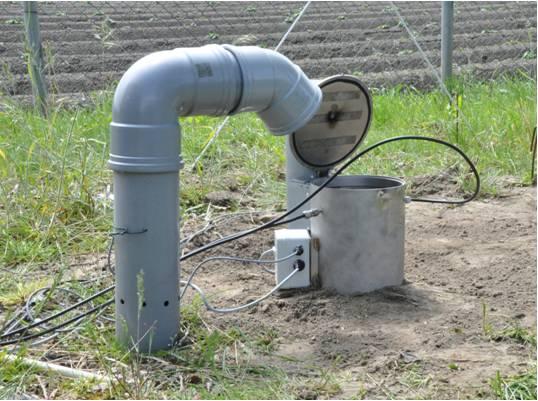Radon. Improving the radon-balance of the Netherlands for more accurate measurement-based determination of greenhouse gas fluxes | S.N. Manohar
S.N. Manohar
The ultimate objective of the Climate Change Convention (UNFCCC) is to achieve:
"... stabilization of greenhouse gas concentrations in the atmosphere at a level that would prevent dangerous anthropogenic interference with the climate system."
The first step in stabilizing the concentrations of the GHG in our atmosphere is to estimate the emissions of these GHG and its primary sources and sinks. The Kyoto protocol is seen as a first step towards reduction of the emissions of GHG for a better sustainable future and requires that the world countries establish a system (national emission inventories) to quantify their emissions of GHG by different sectors and also their primary sources and sinks. The emission inventories might be inaccurate or incomplete and hence it is important to validate the national inventories. Sander van der Laan1 showed that the national emission inventory of the Netherlands can be validated with measurements of GHG concentrations using radon as a tracer. Radon is used because the emission rate of Radon from the soil is fairly constant and a transport model is used to determine the origin of the flux on the earth surface. The aim of the present research is to improve the validation method with a more accurate determination of the radon emission rate, and finally to validate the quality of the transport model.
The natural radioactive noble gas radon ( 222 Rn) is a decay product of 226 Ra in the long decay chain of 238 U. Radon is mostly of terrestrial origin and the exhalation rate is considered to be relatively uniform and after emission into the atmosphere it is quickly dispersed in the air. Radon is a noble gas (no deposition, washout or chemical reactions), so the only loss mechanism is radioactive decay and thus the residence time of radon in the atmosphere is well known. Trace gas emissions of GHG's originating from large terrestrial systems can be estimated using radon as a marker for emissions from the soil. Simulating radon transport is currently one of the best tools for the evaluation of transport schemes in regional to global climate/atmosphereic models. Radon is widely used as a tracer for air masses which have passed over land within a few days of observations, since its emission rate from soil is two orders of magnitude larger than the emission rate over the oceans.
For all these applications of radon it is important to know the emission rate of radon from soil to atmosphere and its temporal and spatial variations. Although the emission rate of radon from the soil is thought to be fairly constant, the release of radon from soil may vary widely with location, soil type, moisture content and also meteorological parameters. To reach the goal of a better parameterization of radon emission rate, temporal variability of radon emission is measured at our Lutjewad station using the closed accumulation method. This method uses a chamber placed on the soil (figure). Radon concentration increases linearly with time during closure of the chamber. Radon flux is calculated from the observed concentration change over time. The Pylon AB-5 detector, which was previously used to calculate the radon flux, will be replaced by KVI radon meters to increase the measurement accuracy and the detection limit. A major part of the project involves testing and calibration of KVI radon meters in the laboratory and at the measurement site Lutjewad.

The next goal is to determine radon emissions at the national scale: the Netherlands. Radon emission will be estimated from the RIVM national network of terrestrial gamma dose radiation (GDR) measurements. Spatial and temporal variations in terrestrial GDR were well correlated with radon flux variability2. Relations between GDR and radon flux will be validated at different national GDR network sites using a portable radon flux chamber. Validated radon emission at the network locations will be integrated to the national level using soil maps.
Finally, a radon flux model will be used to calculate radon emission rate at the Lutjewad station. A comparison between measured and modeled radon concentration will allow us to compare the results and validate the transport model finally check the quality of the national radon emission. The results of this study should enable us to significantly improve the accuracy of national GHG emissions from atmospheric concentration measurements.
References:
1 Sander van der Laan, 2010: Validation of the Greenhouse Gas Balance of the Netherlands. PhD thesis, University of Groningen, 176 pp.
2 Szegvary, T., Leuenberger, M.C., and Conen, F.: Predicting terrestrial 222Rn flux using gamma dose rate as a proxy. Atmospheric Chemistry and Physics (7), 2007, 2789-2795.
